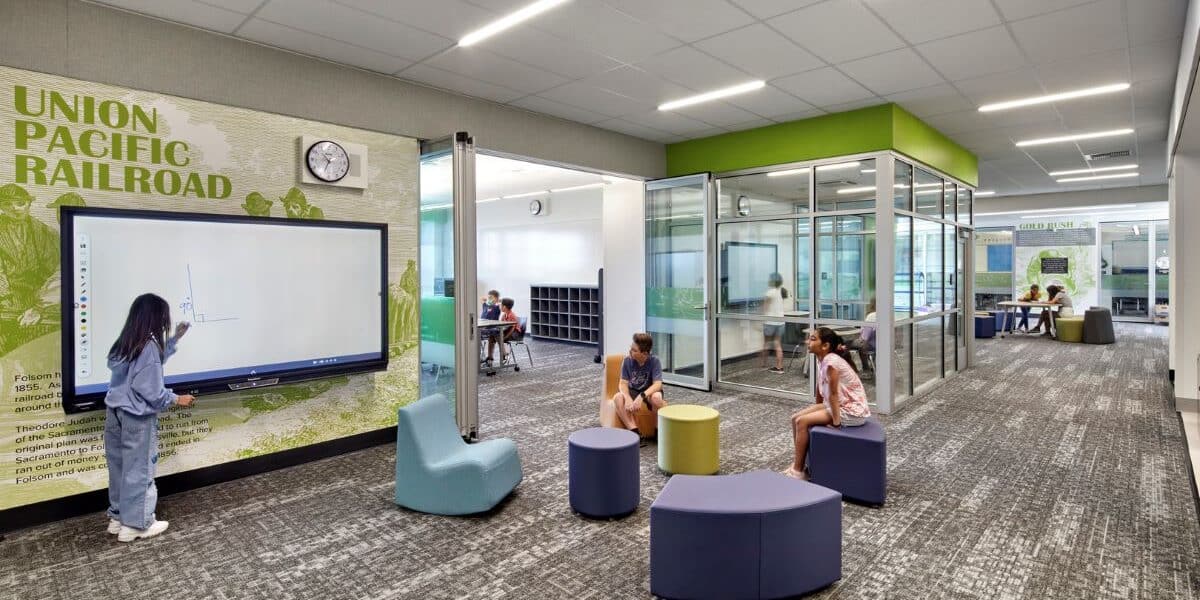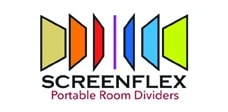In a world where technology’s rapid pace has reshaped how we live, work, and communicate, it should be no surprise that it’s also changing the K-12 education landscape.
This digital transformation in education has brought about a new era of learning that extends beyond the traditional classroom setting. Technology integration in schools has revolutionized teaching and learning and opened doors to various challenges and possibilities.
For schools and architects, this means reimagining school design to be future-ready, capable of accommodating ever-changing technological advancements, and ensuring that students are equipped for the digital age.
The Fabric of the Future: Integrating Technology into Educational Design
In educational design, technology transcends the status of an add-on; it constitutes the very fabric of our future. This vision extends beyond conventional information technology (IT) infrastructure, encompassing the ever-evolving landscape of software and emerging technologies.
Forward-thinking designs must grapple with the demands of high-speed wireless connectivity, the intricacies of hybrid teaching and learning platforms, and the seamless integration of physical and digital learning modalities. Achieving a delicate equilibrium between performance requirements and adaptability is the linchpin in formulating a comprehensive design solution.
The upheaval caused by the pandemic thrust education into the digital frontier, demanding an unprecedented leap in the accessibility of learning across schools.
While challenges persist, spanning behavioral adjustments to ensuring ample bandwidth, the widespread adoption of supportive technology has surged.
The current focus pivots towards creating digital solutions tailored to meet learning objectives and pioneer novel experiences, capitalizing on the potential of mixed reality and interactive technologies.
Embracing the Internet of Things and Experience Design Technologies
The embrace of the Internet of Things (IoT) has become pivotal in the ever-evolving educational technology landscape. It elevates operational efficiency and ensures essential security measures and comfort for those within the school premises.
A centralized digital management system, complemented by machine intelligence, fine-tunes performance, validates space utilization, and anticipates emerging needs.
Leading the charge are Experience Design technologies, including augmented or mixed reality, virtual reality, and interactive touch and display, all tailored to harness the inherent capabilities of digital-native students.
To guarantee that technology remains current and adaptable to future shifts, embedding technological considerations right from the inception of the design process is imperative.
Early client engagement enables meticulous planning, factoring in costs, short-term objectives, and long-term campus-level decision-making. The resulting solutions must serve their intended purpose and accommodate technology’s swift evolution and expansion.
Navigating the Cost of Integration
Nationwide, schools grapple with integrating technology due to its associated costs. The value of technologically advanced buildings often gets lost in translation, leading to short-sighted cost management decisions that set the stage for rapid technology turnover.
The crux lies in recognizing technology as an indispensable facet of the overall design experience, attending to not just the walls and windows but also the digital needs of the students.
Navigating the delicate balance between pursuing cutting-edge technology and budget constraints is a nuanced dance. While clients frequently aspire to adopt current or forward-thinking solutions, the alignment becomes smoother when collaboration occurs early in the design process.
The encompassing “cost of technology” spans acquisition and premature replacement expenses, underscoring the significance of meticulous and forward-looking technology planning.
Technology as a Transformative Tool in Education
The pandemic underscored the crucial role of technology in education, facilitating the shift to remote and hybrid learning. Beyond merely addressing logistical challenges, it has provided opportunities for a complete reimagining of the teaching process.
Technology is not a substitute for teaching; it is a dynamic tool that amplifies and enhances the interaction between educators and students, providing flexibility and access to diverse materials and fostering expansive collaboration.
A standout illustration of this transformative power is found in digital whiteboarding—an innovative tool designed for collaboration. It transcends the limitations of traditional learning hours, evolving into a dynamic platform that sustains continuous student interaction and engagement.
Other transformative tech examples include:
- Mixed reality brings real-world objects to students at an accurate scale in a tangible, interactive way that a screen cannot provide.
- Artificial Intelligence (AI) is heralded as the most transformative technology in education. Its ability to predict and assess learning allows for tailored, measured learning paths.
- Virtual Reality (VR) expands the learning experience beyond traditional audio and video, providing interactive and immersive encounters.
- Robotics not only aids those with physical and cognitive impairments but also offers learning opportunities in a world increasingly shaped by automation.
- Career Technical Education (CTE) programs become crucial for preparing students for the workforce as technology reshapes industries. Integrating technology into these programs offers early career paths and hands-on learning experiences relevant to emerging industries like electric vehicles and clean energy.
Digital Dilemma: Addressing Screen Time Overload
The pervasive presence of technology in contemporary life has given rise to apprehensions regarding excessive screen time, particularly among digital-native students.
As schools grapple with the delicate task of harmonizing technology integration with fostering healthy engagement, granting access to technology and offering guidance on its responsible utilization is imperative.
Unraveling the enigma of screen time is a formidable challenge in a world where digital interfaces reign supreme.
Augmented or mixed reality emerges as a compelling alternative, seamlessly melding digital tools with physical objects and experiences, anchoring students in the tangible realm. The importance of curbing screen time is accentuated, particularly for younger children.
The crux lies in perceiving digital gateways as instruments that augment learning rather than supplant it. Encouraging children to prioritize screen time for educational pursuits ensures a wholesome and constructive relationship with technology.
Future-Ready Schools: Strategies for Success
The foundation for future-ready schools is laid in the thoughtful considerations during the initial design phase.
Adaptable designs, strategic budget allocations, and the recognition of technology as an integral component of the educational experience guarantee schools’ flexibility and responsiveness amidst the ever-evolving technological landscape.
Proactive planning emerges as the linchpin for retaining flexibility while securing a meaningful return on investment.
By integrating technology considerations at the outset, schools can make informed decisions that align short-term goals with long-term adaptability. This approach ensures that today’s investments in educational technology withstand the tests of time and technological evolution.
Bill Kwon is the chief technology officer for HMC Architects, which creates designs that positively impact communities—through healthcare, education, and civic spaces, www.hmcarchitects.com.











